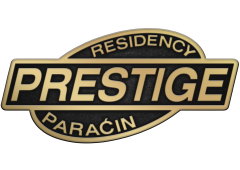Fish have been silent navigators of our planet’s waters for hundreds of millions of years, their migrations shaping not just ecosystems but the very stories and structures of human civilization. From ancient seafarers to modern city planners, the rhythm of fish movement has left an enduring mark—one now echoing in today’s entertainment and conservation. This journey reveals how a natural phenomenon became a catalyst for culture, innovation, and enduring human connection.
Migration Corridors as Natural Highways of Ancient Navigation
Long before compasses and maps, early maritime cultures relied on predictable fish migration corridors as natural highways guiding their voyages. The annual return of species like Atlantic salmon and Pacific herring marked seasonal routes rich with food and opportunity. These waterways became lifelines, linking coastal villages and enabling the exchange of goods, ideas, and traditions. Communities settled near these corridors, building settlements where abundance converged—transforming fleeting migration patterns into lasting cultural foundations.
The River of Life: How Fish Routes Shaped Coastal Economies
In regions from the Amazon to the North Sea, fish migrations dictated the rise and fall of trade hubs. Seasonal aggregations drew fishers, merchants, and travelers, fostering vibrant port cities. Historical records show that the timing and location of fish runs directly influenced market cycles and seasonal festivals. For example, the herring runs of medieval Scandinavia sustained entire regional economies, with entire communities built around processing and trading the catch. These rhythms embedded fish migration into the economic identity of coastal peoples.
Seasonal Presence and the Architecture of Adaptation
Ancient villages were often designed with fish presence in mind—built on stilts, near estuaries, or on bluffs overlooking migration paths. Architectural features like storage facilities for smoked fish, fishing weirs, and ceremonial spaces reflected deep reliance on seasonal abundance. More than shelter, these structures preserved communal knowledge: walls and layouts echoed generations of ecological insight. Today, remnants of such settlements offer profound archaeological evidence of humanity’s adaptive wisdom tied to fish movement.
Legacy in Modern Waterfront Design and Restoration
Modern urban planners increasingly draw from this ancestral wisdom, integrating migratory patterns into sustainable waterfront development. Projects now include fish-friendly infrastructure—spawning habitats, seasonal access zones, and public education trails—honoring the quiet persistence of fish journeys. In cities like Vancouver and Copenhagen, restored estuaries blend recreation, biodiversity, and cultural storytelling, turning once-industrial edges into living narratives of connection between fish, people, and place.
Myths and Memory: Fish Migration as Cultural Identity
Beyond practical use, fish migrations inspired enduring myths and oral traditions. In Polynesian navigation lore, the return of tuna signaled not just fishing season but a sacred return of ancestral spirits. Similarly, Native American stories along the Columbia River wove salmon journeys into creation myths and renewal ceremonies. These narratives preserved ecological knowledge and reinforced community resilience—passing wisdom through generations not just in words, but in identity and ritual.
Rituals of Renewal: Celebrating Migration as Symbol
Seasonal fish runs became powerful symbols of resilience and renewal. Festivals celebrating the first salmon or herring spawn—like Japan’s salmon festivals or Alaska’s First Salmon ceremony—honor the cyclical nature of life and human dependence. These rituals celebrated more than food; they embodied hope, continuity, and the sacred bond between people and their aquatic world. Contemporary artists and performers continue this legacy, using fish migration as metaphor in dance, music, and storytelling.
From Ancient Wisdom to Modern Stewardship
The quiet power of fish migration endures—not only in ecological systems but in how we tell stories and shape our world. Today, scientific data on migration patterns informs marine conservation and sustainable fisheries, guiding marine protected areas and seasonal regulations. Yet the deepest lessons remain in cultural memory: fish journeys taught us timing, patience, and respect for natural cycles.
“When fish return, so do we—reminded that life’s greatest journeys are not just of movement, but of meaning.”
Reconnecting Story and Science: The Journey Continues
Fish migration, once a silent force guiding ancient voyages, now shapes modern entertainment, urban design, and conservation. Its rhythms inspire films, art installations, and community projects that bridge nature and narrative. As we witness changing waters and shifting ecosystems, the story of fish migration remains a quiet but powerful thread—linking past wisdom to future stewardship. In every ripple, we see the enduring journey of fish and human imagination.
Return to the Parent Theme: The Journey of Fish from Migration to Modern Entertainment
| Key Themes in Fish Migration Narratives | |||
|---|---|---|---|
| Ancient navigation guided by predictable fish routes | Seasonal fishing economies shaped port cultures | Myths and rituals sustain ecological memory | Modern conservation uses migration data for stewardship |
- Fish migration patterns have historically directed human settlement and trade, embedding natural cycles into economic life.
- Modern planning integrates this wisdom through ecological restoration and community-centered design.
- Cultural storytelling preserves ancestral knowledge and fosters ongoing stewardship.
- The natural rhythm of migration remains a metaphor for human resilience and adaptation.
